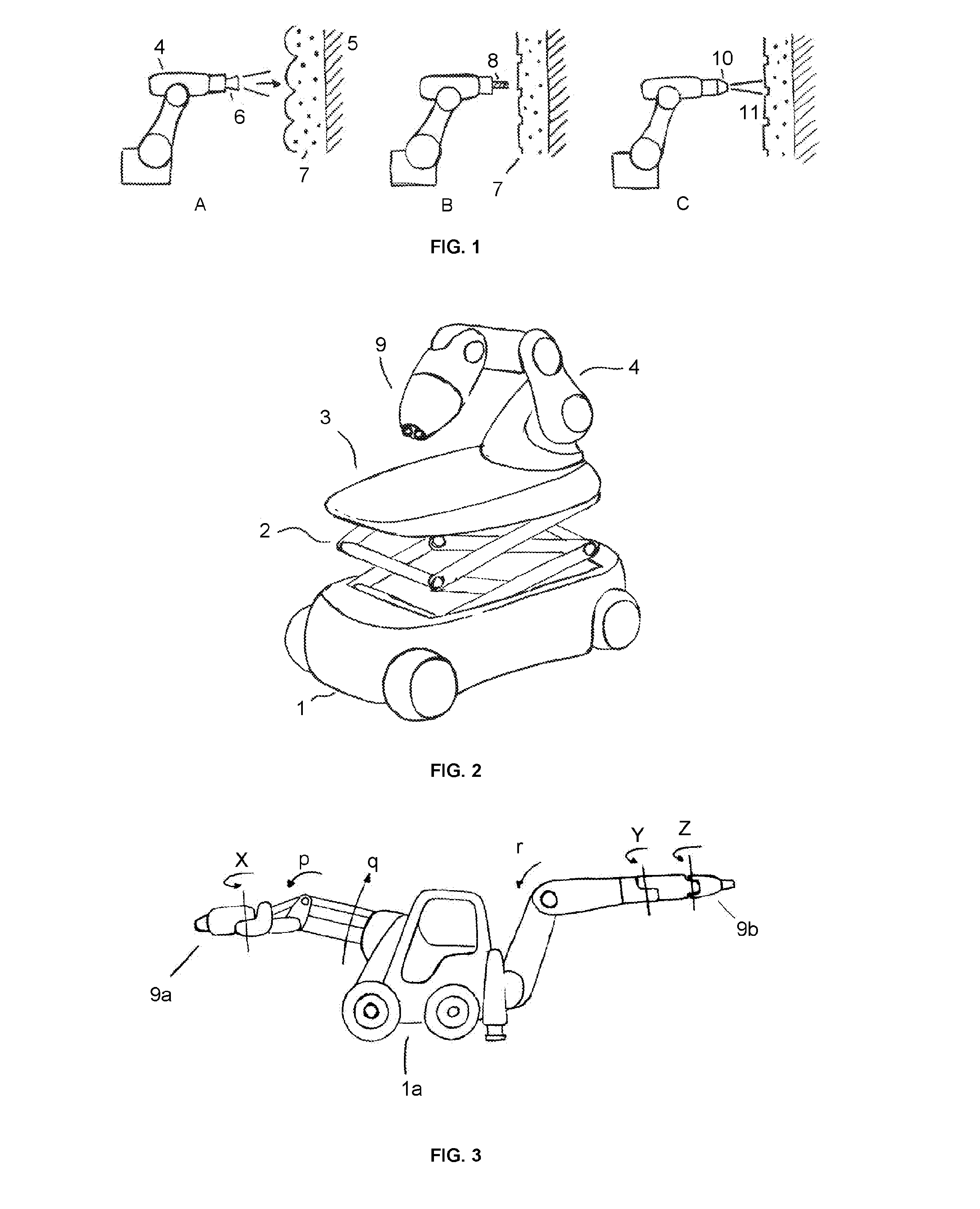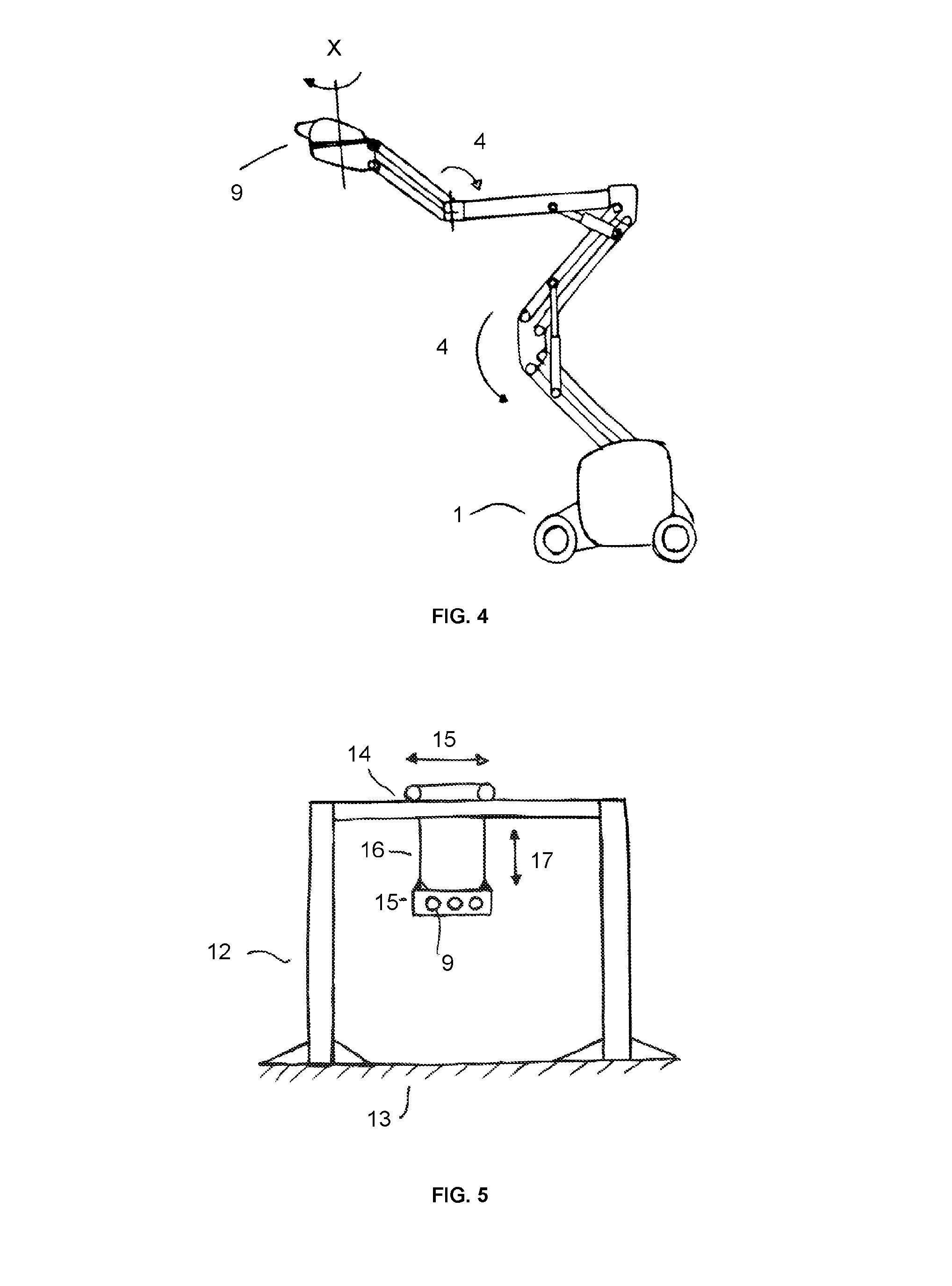Method of Covering a Surface of a Building and Robot Therefor
- Summary
- Abstract
- Description
- Claims
- Application Information
AI Technical Summary
Benefits of technology
Problems solved by technology
Method used
Image
Examples
Embodiment Construction
[0136]FIG. 1 of the accompanying drawings shows the three stage process; A) a method for applying a building material such as expanding foam on 3D surfaces; B) a method to remove excess material and shape the surfaces; and C) a method for applying a finishing treatment to the surface. A robot arm (4) is positioned in front of the surface to be treated (5), in the first stage a mixing nozzle (6) is used to mix and spray a two part expanding foam and binder onto the wall to form an insulating barrier (7). In the second stage a forming head, e.g. a cutting tool (8) is used to remove excess material and add details to the foam (7), e.g. the outline of brickwork. In the final stage a finishing head (10) is used that applies a sealant and surface coat (11).
[0137]FIG. 2 of the accompanying drawings shows a moveable platform (1), which includes the means to raise the height via a scissors lift (2), onto which is mounted a platform (3) for the robot arm (4). The robot arm allows for fine con...
PUM
| Property | Measurement | Unit |
|---|---|---|
| Length | aaaaa | aaaaa |
| Thickness | aaaaa | aaaaa |
| Shape | aaaaa | aaaaa |
Abstract
Description
Claims
Application Information
 Login to View More
Login to View More - R&D
- Intellectual Property
- Life Sciences
- Materials
- Tech Scout
- Unparalleled Data Quality
- Higher Quality Content
- 60% Fewer Hallucinations
Browse by: Latest US Patents, China's latest patents, Technical Efficacy Thesaurus, Application Domain, Technology Topic, Popular Technical Reports.
© 2025 PatSnap. All rights reserved.Legal|Privacy policy|Modern Slavery Act Transparency Statement|Sitemap|About US| Contact US: help@patsnap.com



